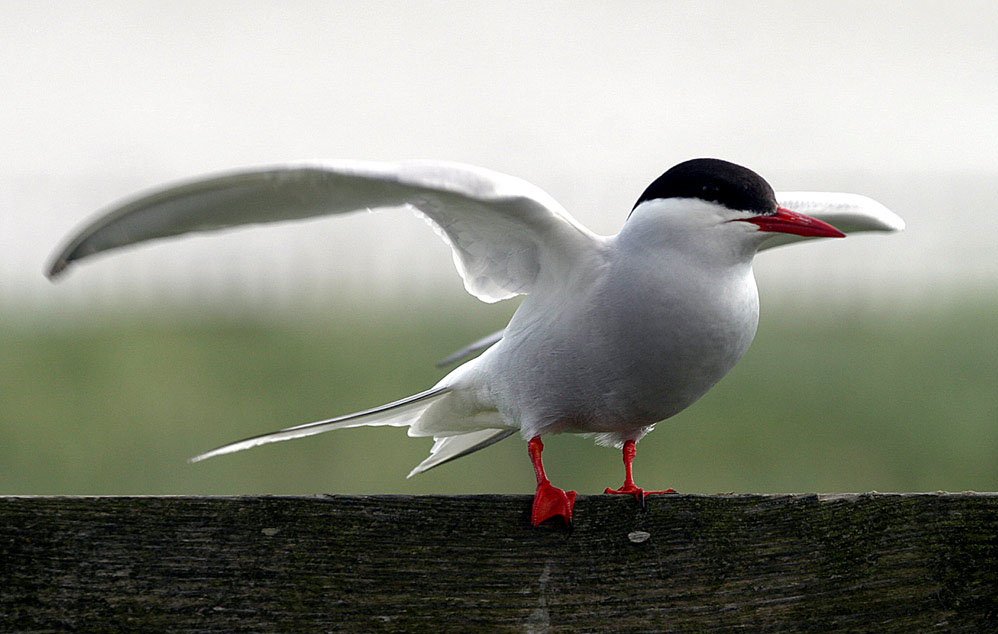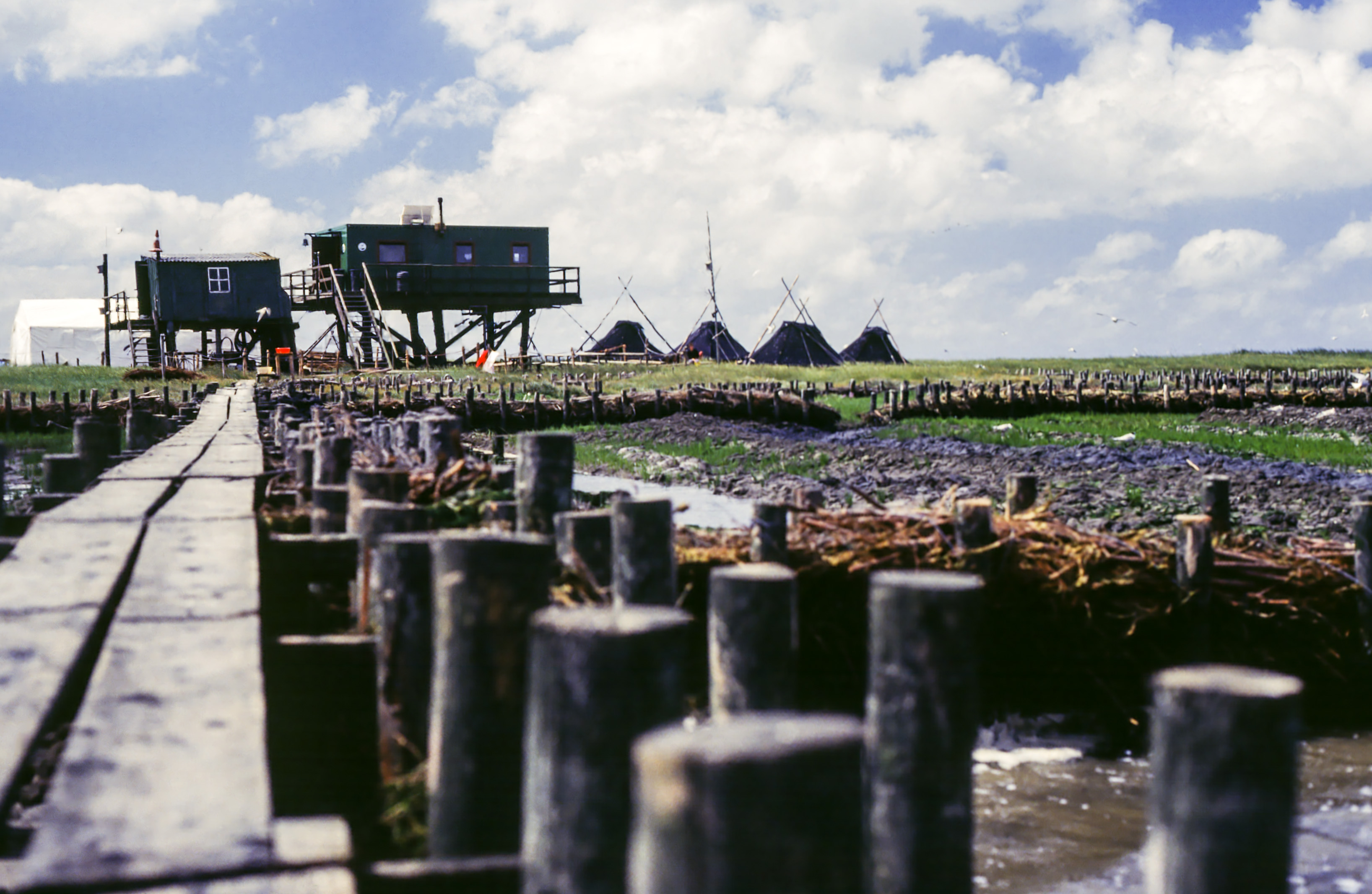Norderoog on:
[Wikipedia]
[Google]
[Amazon]
Norderoog (

 Norderoog is a resting and hatching place for a number of rare species of marine birds. Notably the
Norderoog is a resting and hatching place for a number of rare species of marine birds. Notably the
 Norderoog lies inside Protection Zone 1, the highest-level protective area of the
Norderoog lies inside Protection Zone 1, the highest-level protective area of the
Halligen Frisian
Halligen Frisian ( frr, Halifreesk) is the dialect of the North Frisian language spoken on the Halligen islands, primarily Langeneß and Hooge, in the German region of North Frisia. The dialect has survived despite the islands' being home to le ...
: Noorderuug, Danish
Danish may refer to:
* Something of, from, or related to the country of Denmark
People
* A national or citizen of Denmark, also called a "Dane," see Demographics of Denmark
* Culture of Denmark
* Danish people or Danes, people with a Danish a ...
: Nørreog) is one of the ten German hallig
The ''Halligen'' (German, singular ''Hallig'', ) or the ''halliger'' (Danish, singular ''hallig'') are small islands without protective dikes. They are variously pluralized in English as the Halligen, Halligs, Hallig islands, or Halligen islands. ...
en islands of the North Frisian Islands
The North Frisian Islands (''Öömrang'' and '' Fering'' frr, Nuurdfresk Eilunen, ''Söl'ring'' frr, Nuurđfriisk Ailönen, link=no, da, Nordfrisiske Øer, german: Nordfriesische Inseln) are the Frisian Islands off the coast of North Frisia.
T ...
in the Wadden Sea, which is part of the North Sea
The North Sea lies between Great Britain, Norway, Denmark, Germany, the Netherlands and Belgium. An epeiric sea, epeiric sea on the European continental shelf, it connects to the Atlantic Ocean through the English Channel in the south and the ...
off the coast of Germany
Germany,, officially the Federal Republic of Germany, is a country in Central Europe. It is the second most populous country in Europe after Russia, and the most populous member state of the European Union. Germany is situated betwe ...
. A part of Hooge municipality, the island belongs to the Nordfriesland district.
It is only temporarily inhabited by a bird warden from March to October. The refuge hut at the northeastern end is called ''Jens Wand Hütte'', named after the warden Jens Sorensen Wand, which is built on stilts to protect it from flooding. A former terp
A ''terp'', also known as a ''wierde, woerd, warf, warft, werf, werve, wurt'' or ''værft'', is an artificial dwelling mound found on the North European Plain that has been created to provide safe ground during storm surges, high tides an ...
had been washed away. It has been the site of several ecological studies.
History
The island was first recorded in 1597 as ''Norder Ough''. In 1630 there was a permanent estate on Noorderoog that was inhabited by a beach warden. This dwelling was destroyed in theBurchardi flood
The Burchardi flood (also known as the second Grote Mandrenke) was a storm tide that struck the North Sea coast of North Frisia and Dithmarschen (in modern-day Germany) on the night between 11 and 12 October 1634. Overrunning dikes, it shatter ...
of 1634. Later, another family settled there but their house was washed away in the February flood of 1825 {{short description, Storm surge flood on the North Sea coast of Germany and the Netherlands
The February flood of 1825, also known in Germany as the Great Hallig Flood (''Große Halligflut''), was a devastating flood that occurred from 3 to 5 Febr ...
. From then, Norderoog remained uninhabited. It is the only hallig that does not have a terp for dwelling. Since 1909, the island is owned by ''Verein Jordsand'', an association that promotes the creation of bird refuges along the German North Sea coast.
Fauna and flora

 Norderoog is a resting and hatching place for a number of rare species of marine birds. Notably the
Norderoog is a resting and hatching place for a number of rare species of marine birds. Notably the Sandwich tern
The Sandwich tern (''Thalasseus sandvicensis'') is a tern in the family Laridae. It is very closely related to the lesser crested tern (''T. bengalensis''), Chinese crested tern (''T. bernsteini''), Cabot's tern (''T. acuflavidus''), and elega ...
(''Sterna sandvicensis'') has a colony. Their protection was initiated following studies made in 1893 by Joachim Rohweder
Joachim Rohweder (2 September 1841 – 29 December 1905) was a German teacher, ornithologist and bird conservationist. He wrote one of the earliest comprehensive works on the birds of the Schleswig-Holstein region.
Life and work
Rohweder was b ...
. During spring and early summer, up to 5,000 couples will breed there annually. In 2007, 2,800 breeding couples were counted. Floodings of the island in summer are however a negative factor for breeding and may cause significant statistical deviations.
Apart from the Sandwich tern, also common tern
The common tern (''Sterna hirundo'') is a seabird in the family Laridae. This bird has a circumpolar distribution, its four subspecies breeding in temperate and subarctic regions of Europe, Asia and North America. It is strongly migrator ...
(''Sterna hirundo'') and Arctic tern (''Sterna paradisaea'') use to breed on Norderoog. For a long time, Norderoog was the Eurasian oystercatcher
The Eurasian oystercatcher (''Haematopus ostralegus'') also known as the common pied oystercatcher, or palaearctic oystercatcher, or (in Europe) just oystercatcher, is a wader in the oystercatcher bird family Haematopodidae. It is the most widesp ...
's (''Haematopus ostralegus'') most densely populated breeding colony in the German Bight
The German Bight (german: Deutsche Bucht; da, tyske bugt; nl, Duitse bocht; fry, Dútske bocht; ; sometimes also the German Bay) is the southeastern bight of the North Sea bounded by the Netherlands and Germany to the south, and Denmark and ...
, but recently the population has dropped. Norderoog is however not only an important breeding resort but it is a resting area for migratory bird
Bird migration is the regular seasonal movement, often north and south along a flyway, between breeding and wintering grounds. Many species of bird migrate. Migration carries high costs in predation and mortality, including from hunting b ...
s. At times, some 50,000 marine birds will occur on Norderoog and Norderoogsand, a shoal off the island.
The flora of Norderoog is dominated by salt marsh
A salt marsh or saltmarsh, also known as a coastal salt marsh or a tidal marsh, is a coastal ecosystem in the upper coastal intertidal zone between land and open saltwater or brackish water that is regularly flooded by the tides. It is domin ...
vegetation like ''Salicornia
''Salicornia'' is a genus of succulent, halophytic (salt tolerant) flowering plants in the family Amaranthaceae that grow in salt marshes, on beaches, and among mangroves. ''Salicornia'' species are native to North America, Europe, Central Asia, ...
'' and ''Spartina
''Spartina'' is a taxon of plants in the grass family, frequently found in coastal salt marshes. Its species are commonly known as cordgrass or cord-grass, and are native to the coasts of the Atlantic Ocean in western and southern Europe, nort ...
'' at the immediate shoreline, and meadows with sea sandwort and sea lavender
''Limonium'' is a genus of 120 flowering plant species. Members are also known as sea-lavender, statice, caspia or marsh-rosemary. Despite their common names, species are not related to the lavenders or to rosemary. They are instead in Plumbag ...
. The centre of the island has a steppe character with plants such as reed and ''Leymus arenarius
''Leymus arenarius'' is a psammophilic (sand-loving) species of grass in the family Poaceae, native to the coasts of Atlantic and Northern Europe. ''Leymus arenarius'' is commonly known as sand ryegrass, sea lyme grass, or simply lyme grass.
''.
A colony of Brown rat
The brown rat (''Rattus norvegicus''), also known as the common rat, street rat, sewer rat, wharf rat, Hanover rat, Norway rat, Norwegian rat and Parisian rat, is a widespread species of common rat. One of the largest muroids, it is a brown o ...
s (''R. norvegicus'') also live on the island. As the island is mostly devoid of human populations, these rats have been observed stalking and catching sparrows and large birds such as duck
Duck is the common name for numerous species of waterfowl in the family Anatidae. Ducks are generally smaller and shorter-necked than swans and geese, which are members of the same family. Divided among several subfamilies, they are a form ...
s for food.
Index of breeding bird species
Protection
 Norderoog lies inside Protection Zone 1, the highest-level protective area of the
Norderoog lies inside Protection Zone 1, the highest-level protective area of the Schleswig-Holstein Wadden Sea National Park
The Schleswig-Holstein Wadden Sea National Park (german: Nationalpark Schleswig-Holsteinisches Wattenmeer) is a national park in the Schleswig-Holstein area of the German Wadden Sea. It was founded by the Parliament of Schleswig-Holstein on 1 O ...
. It has been an official nature reserve
A nature reserve (also known as a wildlife refuge, wildlife sanctuary, biosphere reserve or bioreserve, natural or nature preserve, or nature conservation area) is a protected area of importance for flora, fauna, or features of geological or ...
since 1939. However the island has been dedicated to birds ever since 1909 when Verein Jordsand bought it from farmer J. Feddersen for 12,000 German gold mark
The German mark (german: Goldmark ; sign: ℳ) was the currency of the German Empire, which spanned from 1871 to 1918. The mark was paired with the minor unit of the pfennig (₰); 100 pfennigs were equivalent to 1 mark. The mark was on th ...
. Previously, Feddersen had made a living by collecting the birds' eggs and using the island to make hay. Jens Sörensen Wand frequently lived on Norderoog as a bird warden since 1909, and permanently from 1923 to 1950. The bird observatory at the Northeastern shore of Norderoog has been named after him.
This stilt house is safe from storm floods due to its construction. The first hut was built by Wand in 1909, but in 1995/96 it was replaced by a new building. In 2005, an additional loghouse replaced a container building and serves now as a dwelling for the warden and as a visitors centre. The installations are maintained by civilian servants of Verein Jordsand and by volunteers. The observatory is regularly manned from March through October. Since the 1950s, coastal management
Coastal management is defence against flooding and erosion, and techniques that stop erosion to claim lands. Protection against rising sea levels in the 21st century is crucial, as sea level rise accelerates due to climate change. Changes in s ...
has been conducted on Norderoog. In 1977, the western edge was fortified with rocks to counter constant land losses, and in 2000 a rock groyne
A groyne (in the U.S. groin) is a rigid hydraulic structure built perpendicularly from an ocean shore (in coastal engineering) or a river bank, interrupting water flow and limiting the movement of sediment. It is usually made out of wood, concre ...
was amended.
Documentary
In 2008, Norddeutscher Rundfunk broadcast a television documentary ''Die Vogelmutter. Videotagebuch 2008 - aufgezeichnet von Anna B.'' he birds' mother. 2008 video log recorded by Anna B. The film was recorded by a young female volunteer who spent three weeks on Norderoog during avoluntary ecological year
Voluntary may refer to:
* Voluntary (music)
* Voluntary or volunteer, person participating via volunteering/volunteerism
* Voluntary muscle contraction
See also
* Voluntary action
* Voluntariness, in law and philosophy
* Voluntaryism
Vol ...
.
References
External links
{{authority control Halligen Nature reserves in Schleswig-Holstein Islands of Schleswig-Holstein